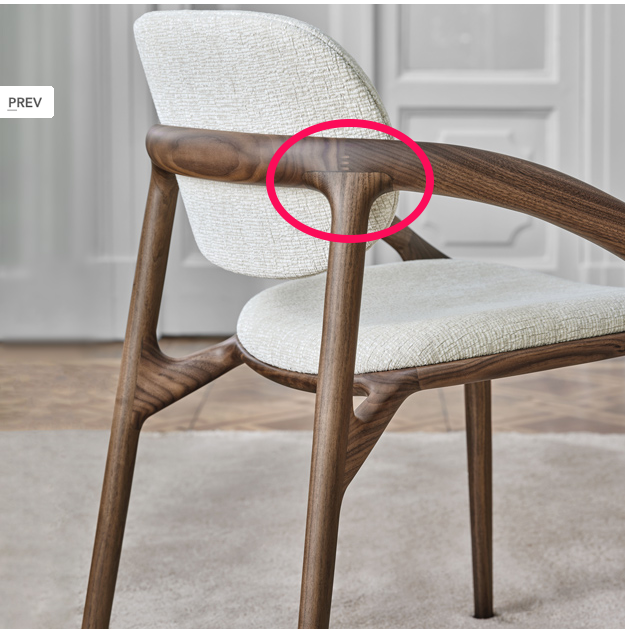I am looking to create some chair designs with joinery like this...

Specifically, I wand to create the effect of two pieces of wood that have been joined and sculpted into a single flowing form (i.e. no sharp bends or edges)
I found a great tutorial for making procedural wood - https://www.youtube.com/watch?v=Uk4WsD4F9D8
I have started to make the form like this:

...but when I go to split the form into two pieces to make the join, I'm not able to find a nice edge that I like to create the break-line. I want to have control on the position and shape of the break-line to make the joinery look nice...

Many at this point would use a Boolean to split the form into two, but I don't like that method because it creates horrible geometry and I can no longer make design changes to the form.
Another way would be to use wood textures instead of procedural wood but I like the freedom to tweak the wood grain with procedural shaders.
Any advice would be most appreciated.
Can't you just model that shape you want? I mean that shape that you have encircled in red, can't you end the piece of wood in your chair with that shape? When you say you are not able to find an edge with that break line, you have to model that shape with the correct loops flowing that way.
Perhaps watching the Pothead modeling lessons will get you on the right track:
https://cgcookie.com/courses/pothead-create-a-hard-surface-character-in-blender
Hi Tim bbeetle ,
What I would do, is to make separate Objects for the different pieces of wood (ie: the same Material, but with different Coordinates, because they all use their own Object Coordinates).
You can also assign different Materials to the different pieces and just use a Vector Mapping Node to change (Location and Rotation) the Texture Coordinates.
You can also go a step further and make 3-Dimensional masks with a bunch of Math Nodes to differentiate between the pieces.
As a woodworker, I would suggest making the pieces of furniture similar to how we make furniture. That is make up the pieces, make the mortice and tenons as separate objects so they have their own meshes etc. then shape the objects into refined curves. Also you only need to make one leg for front and one for back then do symmetry command for them. then you do your final sanding refining shaping. Thats roughly how we make them in the real world. Therefore find some basic carpentry books and follow the process in blender. I use blender to draw up furniture designs and plans then take them to the workshop and make furniture. Also the the woodworking books will help you understand the limitations of physics in furniture design meaning leverage. I will be making some plans for a new desk so i could share the blender files when i have completed them. They will include the cut list and final piece.
An important question is if you feel comfortable enough with modeling? Is it a matter of how to approach it or do you feel you can't model the shape? If you feel the shapes is too difficult then for sure it's better to watch a couple of modeling tutorials to get the hang of it.
Also if you making the work for aesthetics, then real world physics woodworkng joinery books will show you what is possible when working with the material whereas 3d models though looking great could not be made in the workshop or at least one would need to do a lot of fine work. I also suggest checking our Japanese woodworking online as there designs are stunning.